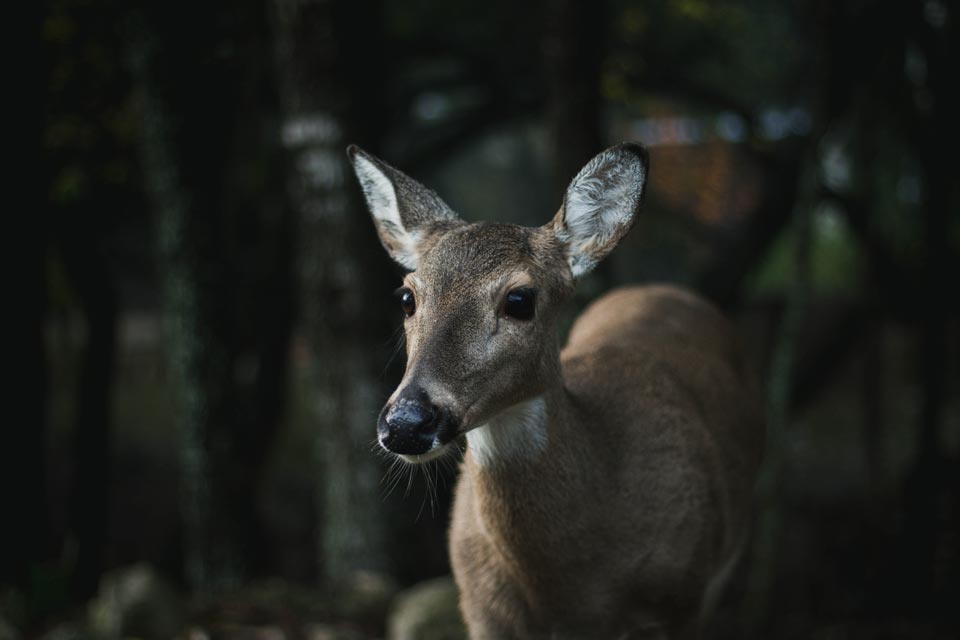It’s February and it’s cold and hunting seasons are over. What am I to do but reminisce about last fall?
I do remember that the fall hunting season (October and November 2015) was unusually warm. Dreadfully warm. I even quit an early November day’s grouse hunt at noon because my dog and I could not go on any longer.
But despite the warm weather, our data indicated there was no evidence of any change in the timing of the rut.
However, one astute reader suggested that we should compare 2015 to previous years in terms of buck movements, not just when the rut occurred.
Good idea, but this blog is only a small part of my day job and there are only so many hours in that day. There are more questions than time to try to answer them.
Sometimes you just need an excuse. Well, last week I got one.
A former student, who is now a deer biologist for a northeastern state, asked if our data might provide some insights into the 2015 hunting season.
Harvest data are still being tallied and summarized for most states, but anecdotal observations suggested the harvest may have dipped across multiple northeastern states this year. There are potentially many reasons, but one possibility is that the unusually warm autumn affected deer (and hunter?) behavior.
Or maybe it’s a bunch of hogwash.
Anyway, it got me thinking. We now have 3 years of deer movements during October-December. Would comparing deer movements over 3 years reveal any secrets?
There’s one way to find out.
I started by calculating the distance moved between 3-hr intervals for each radio-collared deer. Sum these distances by week for each deer, and then average across deer, and you get… the average distance traveled per week.
Because the rut occurs during this time period, I averaged these weekly distances separately for males and females.
The big reveal can be seen in the graph below. It suggests that males consistently traveled less distance during 2015 than either of the two previous years!

[Look carefully at this graph. At the peak of the rut these bucks averaged 30 km per week – about 18 miles! Even in 2015 it was almost 16 miles per week!]
But… and there are a couple. Keep in mind we only had 4-9 males monitored during each of these 3 years. Even with 9 bucks, the 95% confidence intervals (a measure of the variability in the data) indicated that each weekly estimate had a confidence interval of as much as +/- 6,000 meters or more. There is a lot of variability among deer – and we are only looking at deer >2.5 years old.
Check out the graph for females. Here’s the second “but.” How do you explain why 2013 (not 2015) movements are less than other years?

A good scientific theory would explain why females traveled less in 2013 and also why males traveled less in 2015! [The confidence intervals for females was about +/- 2,000 meters because we had 14-22 females radio-collared each week]
Despite the interesting graph for males, I wasn’t convinced that 2015 weather explained differences in deer movements.
My former student pointed out that maybe deer movements were reduced only during the daytime when it was warmest and hunters could hunt. If deer reduced their daytime movements (legal shooting hours) maybe that could explain the anecdotal and unconfirmed dip in harvest.
So back to the data. This time I only summed the distance moved per week for the hours between 7am and 7pm.
Here are the results for males for just daytime hours.

I might grant you that in early November distances traveled were lower in 2015 than 2013 or 2014. But if you compare daytime distances to 24-hr distances – for all 3 years the daytime distance traveled are not much less than half that traveled for 24 hrs.
I even investigated these patterns using a statistical model – because sometimes the human brain tends to detect patterns that don’t exist – or vice versa. Well my statistical analysis confirmed that movements rates were less in 2015, but temperature provided no help in explaining any of the variability in movements over the 3 years.
Remember breeding (hence the rut) is governed by when females are in estrus. And timing of estrus is determined primarily by photoperiod (daylength). Not daytime temperatures!
So, here’s my conclusion about deer movements during the 2015 deer hunting season compared to other years:
The weather was warmer than usual.
-Duane Diefenbach
If you’d like to receive email updates when new stories are posted, click here
P.S. In case you’re interested. Here is the daily maximum temperature for State College, PA for October 1st – December 31st for 2013-2015. Temperatures in 2015 were warmer, but not all the time.

P.P.S. A reader asked what nighttime movements looked like. Here they are. The same basic pattern. What do I see? I see the same pattern across years as the daytime graph above. I think something other than temperature must explain any differences among years. Another reader emailed me and suggested mast (acorns and beechnuts) might explain differences. Possibly for females, but in late October and November the males don’t have time to eat. But that’s an analysis for another day!

